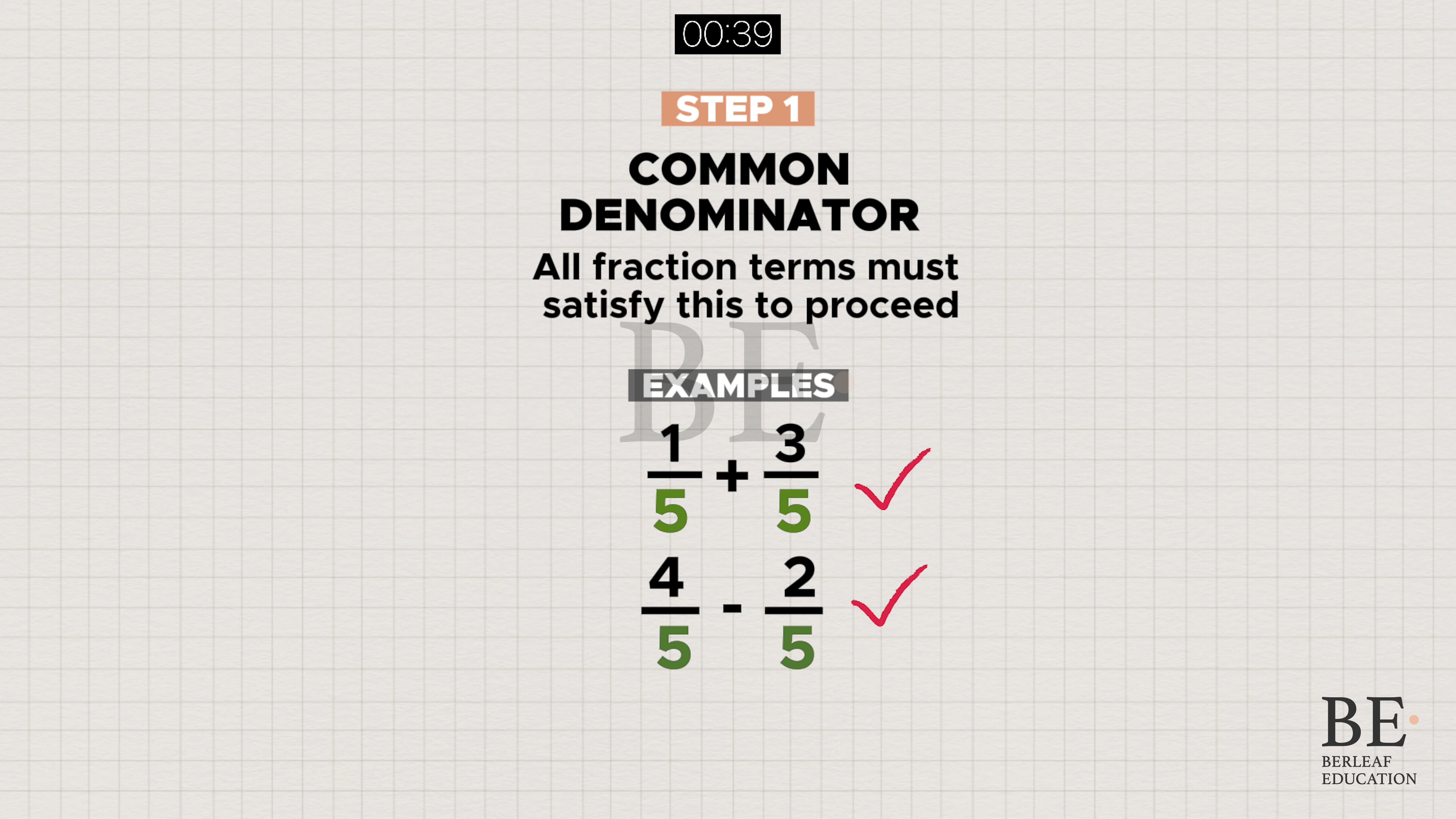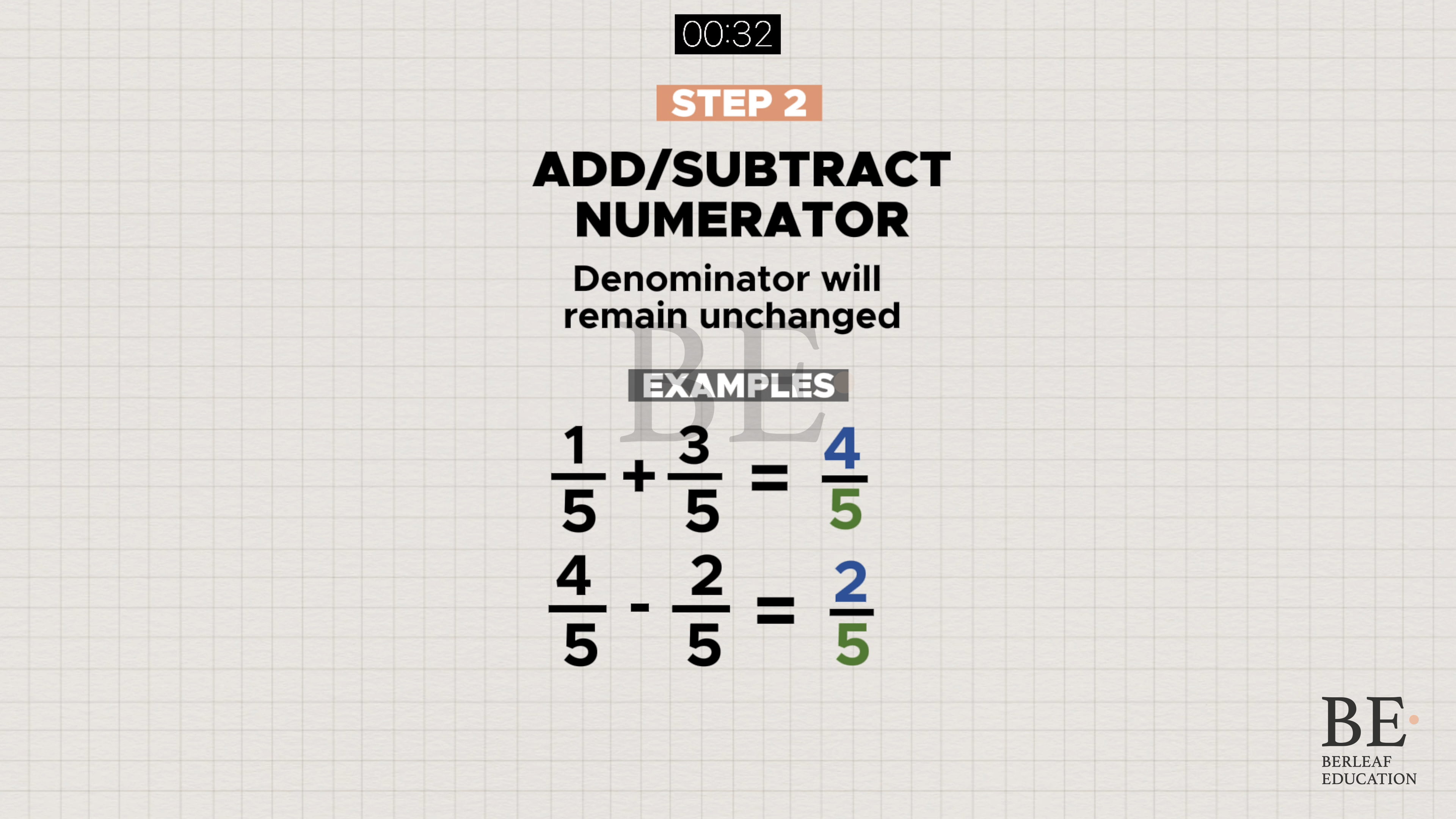ONE MINUTE TO ACE is an educational series by Berleaf Education that aims to share knowledge and learning hacks with passionate learners around the world.
SAY HELLO TO...

Berwin Leong, the Lead Tutor of Berleaf Education. With over 13 years of teaching experience, Berwin is all about sharing awesome learning tips and top-quality materials to turbocharge students’ learning journey and open doors to success! And YES, he is the producer of 1 Minute to Ace and Just Ask Berleaf on our YouTube channel!
Berwin’s teaching approach has transformed struggling students into confident knowledge enthusiasts, ready to overcome challenges and pursue their passions.
Join us now to embark on an exciting learning adventure guided by Berwin for you or your kids!
Limited intake yearly!
LEARNING RESOURCES
Fraction: Addition & Subtraction
Suitable for: Primary 3 and above
Prerequisite: Factors & Multiples, Fraction Anatomy
Pre-Requisites
Are fractions causing you frustration? Are you puzzled by the intricacies of adding and subtracting fractions? Don’t worry – we’ve got your back! In this quick and easy guide, we’ll walk you through the fundamental steps to effortlessly conquer fraction addition and subtraction. And guess what? It’ll only take a minute of your time!
But before you dive in, make sure to check out our accompanying tutorial video: “Take One Minute to Ace Fraction Addition and Subtraction”.

Step 1: Making Common Denominators
The first key to mastering fraction addition and subtraction is ensuring that all the fractions share common denominators.

Step 2: Adding / Subtracting the Numerators
Once you have established common denominators, the next step is to add or subtract the numerators of the fractions, noting that you only need to focus on the numerators. Leave the denominators untouched – they remain constant throughout the process.

Adding or Subtracting Fractions with Uncommon Denominators
Situation #1: Partial Fraction Change
What if the fractions you’re working with don’t share a common denominator? If one fraction’s denominator is a factor of the other’s, you simply have to do a partial fraction change. This allows you to align the denominators and proceed with making the addition or subtraction process.

Situation #2: Uncommon Denominator (All Fraction Change)
But what if neither fraction’s denominator is a factor of the other’s? Simply change both the denominator to the lowest common multiple.

That's All For Now!
Subscribe to our YouTube Channel for more topics and take 1 minute to ace them!

Leave a Comment
Your email address will not be published. Required fields are marked *